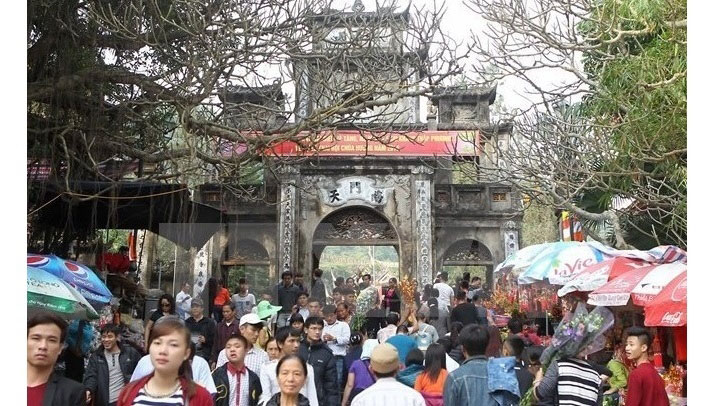


|
Visiting pagodas at the beginning of Lunar New Year has become an age-old tradition of Vietnamese people. (Photo VNA) In the seven-day period, the Hue Complex of Monuments, a World Cultural
Heritage site and famous tourist destination in the central province of Thua
Thien – Hue, welcomed 117,000 visitors, including 47,000 foreigners. The
total number of tourists to the site saw an increase of nearly 50% from the
same period last year. The site offered free entrance to visitors on the
first three days of the lunar year (February 16-18).
The Da Nang Tourism Department said the central coastal city
served closed to 300,000 tourist arrivals during Tet, up 14% from 2017. The
number of international visitors amounted to over 132,000, increasing 14%
year-on-year, while the figures for domestic visitors were 164,893 and 5%,
respectively.
The Mekong Delta city of Can Tho, meanwhile, received 700,000
tourists, 10% higher than last year, according to its Department of Culture,
Sports and Tourism.
Le Minh Son, the department’s deputy director, said more than
99,000 people came to the city on an average daily basis. The city’s tourism
revenues during the holiday topped VND75.8 billion (US$3.3 million), up 10%
from last year.
Within just five day of Tet (February 16-20), over 1 million
people flocked to the southeast region (excluding the number of visitors to
the local Vung Tau beach during the period).
Binh Duong province announced that its popular Dai Nam tourism
site attracted nearly 150,000 tourists during the period, a seven-fold
increase compared to normal days.
Dong Nai province highlighted the number of more than 100,000
arrivals per day recorded in the local Buu Long tourism site; the figure
represented an annual growth of 30%.
Tay Ninh province, home to the popular spiritual tourism
destination of Ba Den, also posted a 5% increase in the number of visitors,
at over 100,000 visitors per day.
|